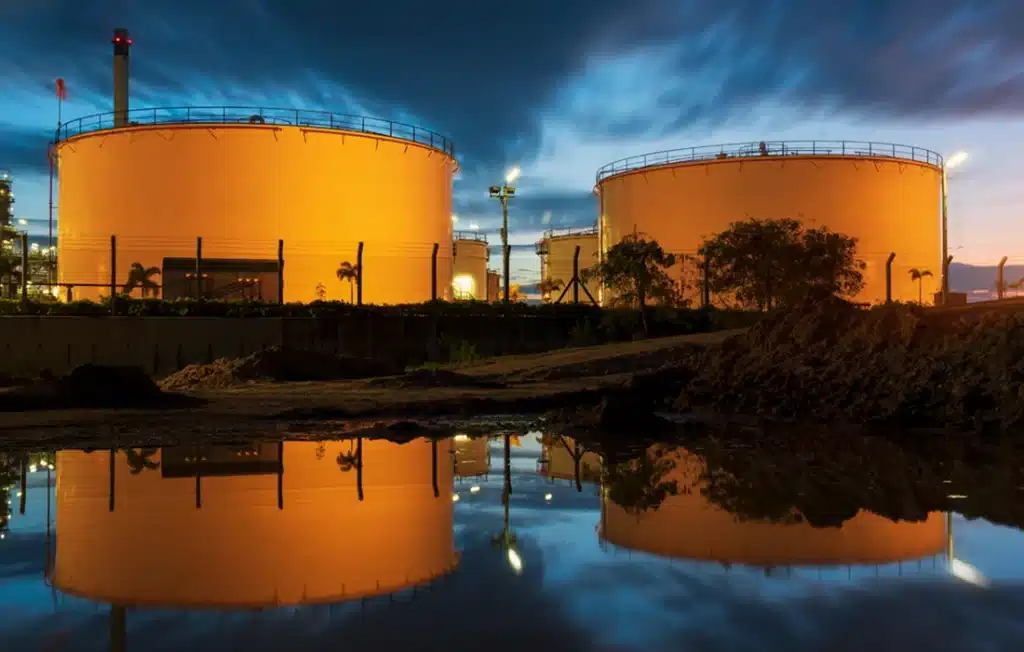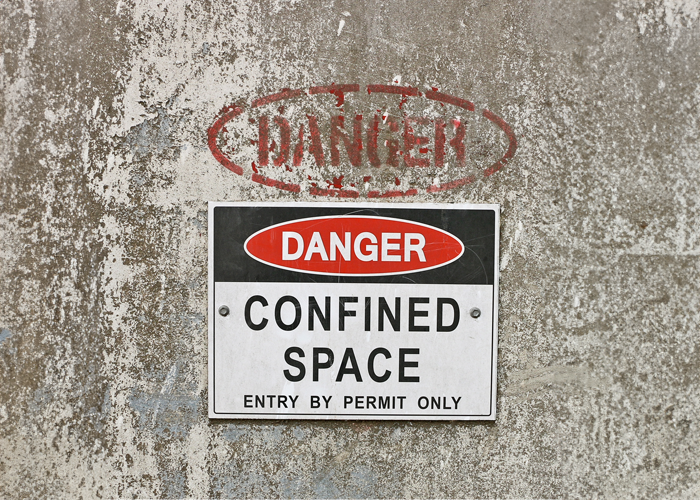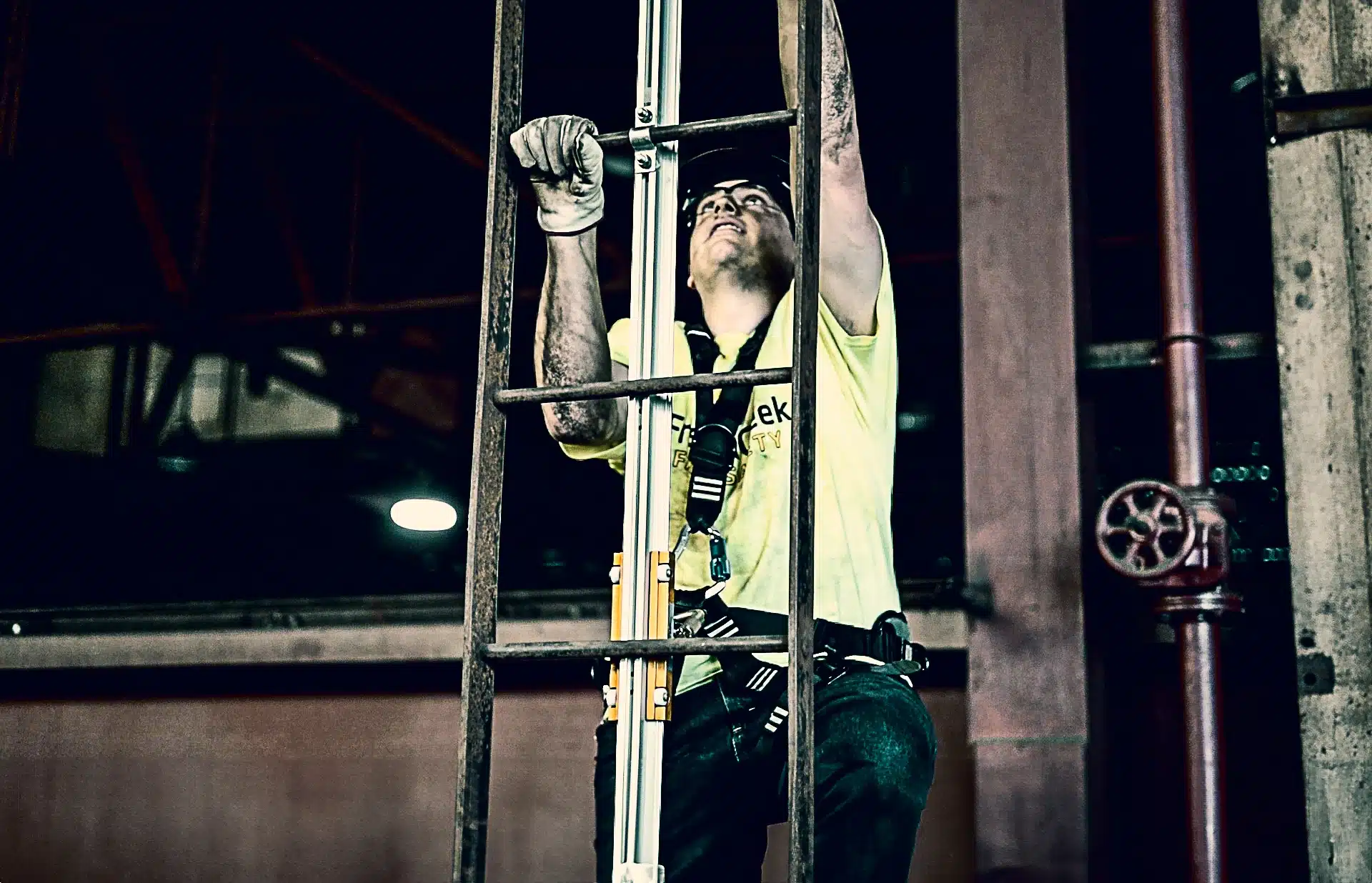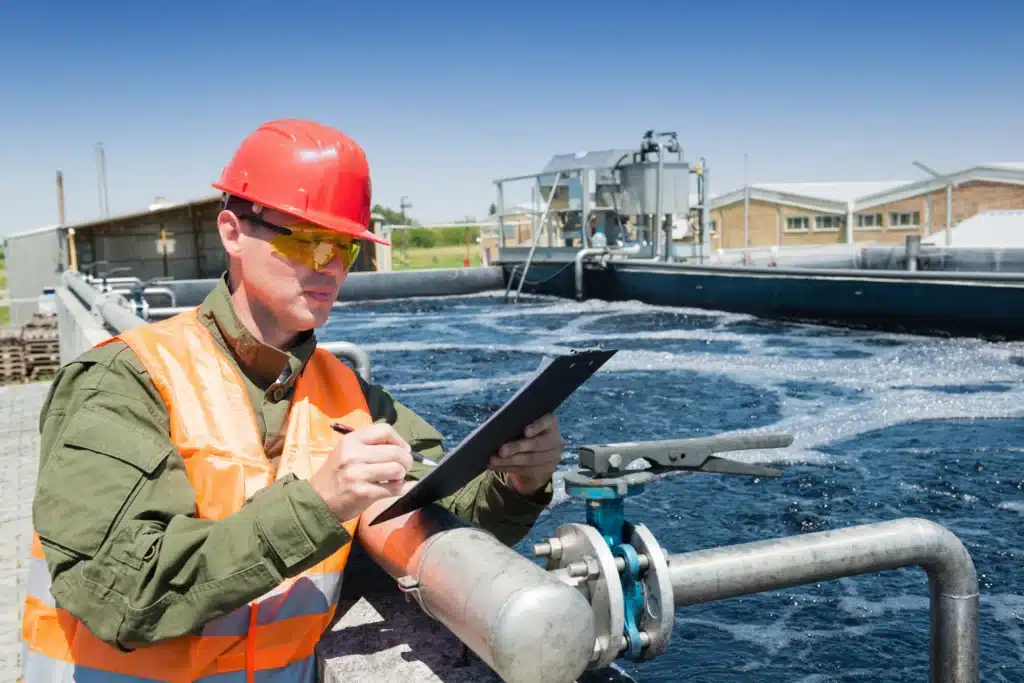
Ensuring robust fall protection in the water and wastewater industry is crucial due to the unique hazards present in these environments. Understanding these risks and implementing appropriate safety measures can significantly reduce workplace injuries and ensure compliance with safety regulations.
Common Fall Hazards in Water & Wastewater Facilities:
One of the biggest hazards in the wastewater industry is confined space entry, which is unavoidable when servicing tanks, digesters, wet wells, and underground vaults. OSHA defines a confined space as an area that:
- Is large enough for an employee to enter and perform work.
- Has limited or restricted means of entry or exit.
- Is not designed for continuous occupancy.
In wastewater facilities, confined spaces are especially hazardous because they often contain toxic gases, lack oxygen, or have potential engulfment hazards (such as water, sludge, or chemicals). Workers entering these spaces must use proper fall protection and rescue systems to ensure safety.
FrenchCreek’s Confined Space Solutions

Tripod Systems: Ideal for vertical entry and rescue in manholes or other small spaces. They are lightweight, easy to transport, and simple to set up.
Davit Systems: A more versatile solution than tripods, offering multiple base options to accommodate applications where a tripod system is not feasible. These systems are especially useful for fixed installations around tanks, pits, and treatment vessels.
Stainless Steel Lifelines: Wastewater environments can be highly corrosive due to exposure to caustic chemicals and potable water, which can quickly degrade standard fall protection equipment. FrenchCreek’s confined space systems feature stainless steel lifelines, which resist corrosion and extend the lifespan of the equipment in harsh environments.
Slippery Surfaces & Elevated Work Areas: Preventing Falls in Wet Conditions
Wastewater treatment facilities are constantly exposed to moisture, biofilms, and chemicals that make surfaces dangerously slippery. Workers frequently move across elevated platforms, catwalks, and tanks, where a single misstep can result in a serious fall.
Key Fall Protection Measures:
Guardrails & Handrails to create a physical barrier against falls.
Slip-resistant surfaces such as gritted coatings to reduce slipping hazards.
Personal Fall Arrest Systems (PFAS) include full-body harnesses and self-retracting lifelines (SRLs) to provide protection when working at height.
The Problem with Fixed Ladders in the Wastewater Industry

Fixed ladders are abundant in wastewater treatment plants, used to access digesters, aeration tanks, clarifiers, pump stations, and more. Wastewater facilities are inherently wet and slippery, making even the simplest task of climbing fixed ladders much more hazardous. Additoinally, OSHA’s 2018 fixed ladder regulations require that any new ladder over 24 feet be equipped with a ladder safety system or personal fall arrest system. Older cages and wells do not meet these new requirements. To gain further insights on these changes, read our previous blog.
FrenchCreek’s Rigid Rail System: The Best Solution for Fixed Ladder Safety
To help companies comply with OSHA regulations while keeping workers safe, FrenchCreek Fall Safety offers a rigid rail fall protection system designed for fixed ladders in wastewater facilities.
How It Works: The system consists of a rigid stainless steel rail that mounts to the ladder, along with a fall-arrest trolley that moves smoothly with the user. In the event of a fall, the device locks instantly, preventing the worker from falling.
Why It Outperforms Traditional Ladder Cages:
• Provides continuous fall protection instead of just an enclosure.
• Eliminates the risk of hitting cage bars or protrusions in the event of a fall.
• Available in stainless steel, preventing corrosion in the harsh wastewater environment.
• Ensures full OSHA compliance, preventing costly fines and liability.
Regulatory Compliance & Worker Training: Why It Matters
Failure to comply with OSHA’s fall protection and confined space entry regulations can result in significant fines, lawsuits, and—most importantly—worker injuries or fatalities. Ensuring compliance requires a combination of proper fall protection equipment and comprehensive worker training.
Key OSHA Standards to Know:
- 29 CFR 1910.28(b)(9) – Requires fall protection on all fixed ladders over 24 feet.
- 29 CFR 1910.146 – Covers confined space entry and rescue requirements.
- 29 CFR 1926.502 – Outlines fall protection requirements for general industry and construction.
How FrenchCreek Can Help:
- On-site and Virtual Training Programs to ensure employees understand how to use fall protection equipment properly.
- Custom Safety Solutions are designed specifically for the challenges of wastewater facilities.
- High-quality, equipment built to last in caustic environments.
Final Thoughts: Protecting Workers in the Wastewater Industry

The wastewater industry presents unique fall hazards due to confined spaces, slippery surfaces, and fixed ladders that require modern safety solutions. FrenchCreek Fall Safety is committed to providing high-quality, OSHA-compliant fall protection systems to keep workers safe.
Don’t miss your chance to see these solutions in person at WWETT 2025 in Indianapolis from February 17–20! Visit our booth to talk with industry experts, see live demonstrations, and learn how FrenchCreek can help keep your team safe and compliant.
For more information on fall protection in wastewater treatment, contact us today!
Contact us today at 877-228-9327 or email [email protected].